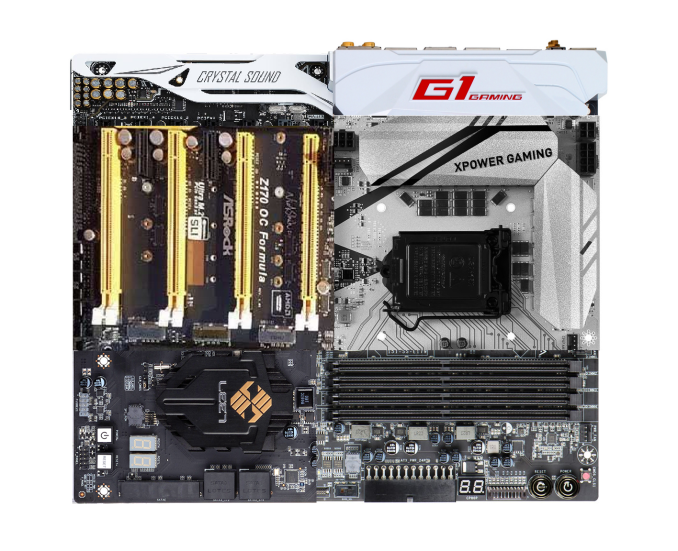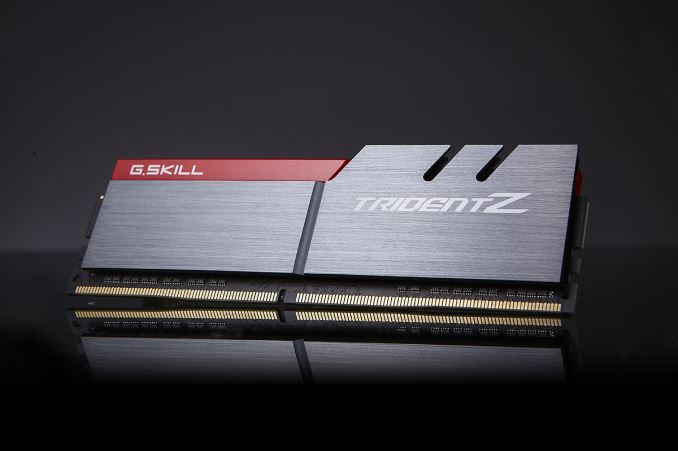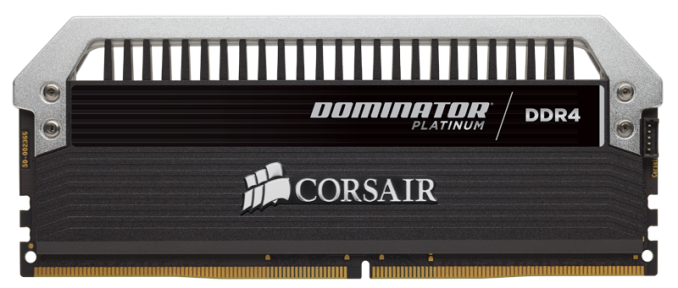The Intel 6th Gen Skylake Review: Core i7-6700K and i5-6600K Tested
by Ian Cutress on August 5, 2015 8:00 AM ESTAlso Launching Today: Z170 Motherboards, Dual Channel DDR4 Kits
The new Skylake processors are assigned a new socket – LGA1151. Intel’s policy since 2006 has been to maintain sockets for two generations and as a result moving from Broadwell to Skylake we were expecting the change. This means that Skylake processors will not work in LGA1150 based motherboards, i.e. those with Intel’s 8th and 9th generation chipsets. For Skylake we get the 100-series chipsets with additional functionality. Launching today in turn is the first member of the 100-series family, the overclocking-friendly Z170, with the other chipsets in the family to follow later in the year.
We have a large piece on the motherboards being released or talked about for Skylake, covering some 55+ products and the different variations within. The major motherboard manufacturers such as ASUS, GIGABYTE, ASRock, MSI, EVGA and a couple of others should all have a wide range ready to purchase on day one, although some models may be region specific.

The badly MSPaint’ed hybrid: MSI’s XPower Gaming Socket, GIGABYTE’s G1 Gaming IO panel, EVGA’s DRAM slots, ECS’s chipset, ASRock’s PCIe arrangement and ASUS’ Deluxe audio.
Here’s an amalgamation of some of the designs coming to end users, with almost all of them investing heavily in gaming brands with specific components to aid the user experience while gaming. Aesthetic designs are also going to be a focus of this generation, with some of the manufacturers moving into a different direction with their designs and trying some new color schemes. Some basic looking models will also be available.
Prices for Z170 motherboards will range from $80 all the way past $400+, depending on feature set and size. A number of motherboards above $150 will feature a couple USB 3.1 Gen 2 (10Gbps) ports, although you will have to check whether they are Type-A or Type-C. That being said, most motherboards with USB 3.1 will use both, but there are a select few that are C-only or A-only. Also over $150 we will see a lot of Intel’s new network controller, the I219-V, although the gaming lines might invest in Rivet Network’s Killer solution instead.
Intel is launching the Alpine Ridge controller at this time as well, which is said to support USB 3.1 Gen 2, Thunderbolt 3, HDMI 2.0, DisplayPort, and DockPort. According to our sources it would seem that GIGABYTE currently has an exclusive on this technology, and it will be used for their USB 3.1 Gen 2 ports on most motherboard models. Other functionality from the Alpine Ridge controller (TB3, HDMI 2.0) will be on a case-by-case basis depending on how the controller works in two different modes or if extra components are used. We are told that Alpine Ridge costs similarly to the ASMedia ASM1142 controller, but will enable two USB 3.1 Gen 2 ports at 10 Gbps simultaneously as it uses four PCIe lanes from the chipset.
We will go more into the 100-series chipset in the next page, but it is worth mentioning briefly here that the speed between the CPU and the chipset has increased from DMI 2.0 (5 GT/s, 2GB/sec) to DMI 3.0 (8 GT/s, 3.93GB/sec), and that the chipset has a new high speed hub (HSIO) that allows 26 lanes to be used from it although some lanes are limited (e.g. 20 PCIe 3.0 lanes maximum split into five x4 controllers). Intel’s Rapid Storage Technology is upgraded as well to give three PCIe drives access to its features as long as they are on the correct HSIO ports.
DRAM: The March to DDR4
In the world of DRAM for personal computers, DDR3 is currently king. Having been the main standard since 2007, you would be hard pressed to find a mainstream or low end platform sold that did not require access to DDR3. That changed in the enthusiast segment last year with the launch of Haswell-E which also introduced DDR4 at a high premium. For Haswell-E there was no crossover – you had no choice but to use DDR4 (unless you might be a million-unit customer).
Because the consumers and consumer product OEMs are more price sensitive, DDR4 will be a slower transition. There is precedent here in that the move from DDR2 to DDR3 saw a generation of processors that supported both standards and it was up to the motherboard manufacturer to design for it. In this transition, Skylake processors will support both DDR3L and DDR4 modules, with a few caveats.
Caveat number one is that initially, only DDR4 motherboards will be on the market. So if you upgrade now, DDR4 needs to be on the shopping list as well. We have had word of some DDR3L-only motherboards coming, as well as combo boards with DDR3L and DDR4 slots on board. Caveat one-point-five, you can use either DDR3L or DDR4, but not both at the same time.
Caveat number two, DDR3L is different to DDR3 as it operates at a lower voltage. This means that the memory controllers on Skylake most likely have a combined voltage domain, and regular DDR3 might not work (in fact early testing suggests not without reducing the voltage). Very few people currently own DDR3L DIMMs, so the likelihood of a user performing an upgrade while reusing their RAM might be slim.
Caveat number three: prices of DDR4 have dropped significantly since last year, and there is only a small premium over DDR3. The benefits of DDR4 include a lower operating voltage, a more stable design, and the ability to purchase 16GB modules with ease. That means that a Skylake platform will happily take 64GB of memory.
With that last point, we should point out that Skylake is a dual memory channel architecture, supporting two memory modules per channel. This gives a maximum of four DDR4 tests, and 4x16 = 64GB maximum.
We have been told that Skylake’s memory controller, compared to previous generations, is absolutely golden at higher speed memory support. By default Skylake supports the JEDEC standard for DDR4, 2133 MT/s at a latency of 15-15-15, but the overclocking guides we have received suggests that all processors should be able to reach DDR4-3200 relatively comfortably, with a few processors in the right motherboards going for DDR4-4000. While this should bode well for integrated graphics users, those high end kits are typically very expensive.
We currently have dual channel kits in to test from a number of the DRAM companies, and plan on performing a memory scaling article within the next few weeks to see how exactly performance might scale on Skylake. Though in the meantime, as part of this review, we were able to source a closed beta variant of a combination DDR3L/DDR4 motherboard for Skylake and have included a test comparing the two.












477 Comments
View All Comments
jwcalla - Wednesday, August 5, 2015 - link
I kind of agree. I think I'm done with paying for a GPU I'm never going to use.jardows2 - Wednesday, August 5, 2015 - link
If you don't overclock, buy a Xeon E3. i7 performance at i5 price, without integrated GPU.freeskier93 - Wednesday, August 5, 2015 - link
Except the GPU is still there, it's just disabled. So yes, the E3 is a great CPU for the price (I have one) but you're still paying for the GPU because the silicon is still there, you're just not paying as much.MrSpadge - Wednesday, August 5, 2015 - link
Dude, an Intel CPU does not get cheaper if it's cheaper to produce. Their prices are only weakly linked to the production costs.AnnonymousCoward - Saturday, August 8, 2015 - link
That is such a good point. The iGPU might cost Intel something like $1.Vlad_Da_Great - Wednesday, August 5, 2015 - link
Haha, nobody cares abot you @jjj. Integrating GPU with CPU saves money not to mention space and energy. Instead of paying $200 for the CPU and buy dGPU for another 200-300, you get them both on the same die. OEM's love that. If you dont want to use them just disable the GPU and buy 200W from AMD/NVDA. And it appears now the System memory will come on the CPU silicon as well. INTC wants to exterminate everything, even the cockroaches in your crib.Flunk - Wednesday, August 5, 2015 - link
Your generational tests look like they could have come from different chips in the same series. Intel isn't giving us much reason to want to upgrade. They could have at least put out a 8-core consumer chip. It isn't even that much more die space to do so.BrokenCrayons - Wednesday, August 5, 2015 - link
With Skylake's Camera Pipeline, I should be able to apply a sepia filter to my selfies faster than ever before while saving precious electricity that will let me purchase a little more black eyeliner and those skull print leg warmers I've always wanted. Of course, if it doesn't, I'm going to be really upset with them and refuse to run anything more modern than a 1Giga-Pro VIA C3 at 650 MHz because it's the only CPU on the market that is gothic enough pending the lack of much needed sepia support in Skylake.name99 - Wednesday, August 5, 2015 - link
And BrokenCrayons wins the Daredevil award for most substantial of lack vision regarding how computers can be used in the future.For augmented reality to become a thing we need to, you know, actually be able to AUGMENT the image coming in through the camera...
Today on the desktop (where it can be used to prototype algorithms, and for Surface type devices). Tomorrow in Atom, and (Intel hopes), giving them some sort of edge over ARM (though good luck with that --- I expect by the time this actually hits Atom, every major ARM vendor will have something comparable but superior).
Beyond things like AR, Apple TODAY uses CoreImage in a variety of places to handle their UI (eg the Blur and Vibrancy effects in Yosemite). I expect they will be very happy to use new GPU extensions that do this with lower power, and that same lower power will extend to all users of the CI APIs.
Without knowing EXACTLY what Camera Pipeline is providing, we're in no position to judge.
BrokenCrayons - Friday, August 7, 2015 - link
I was joking.